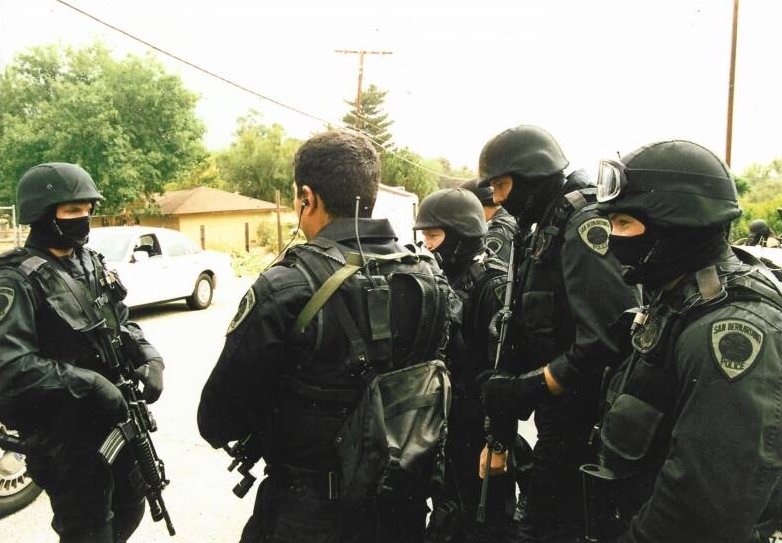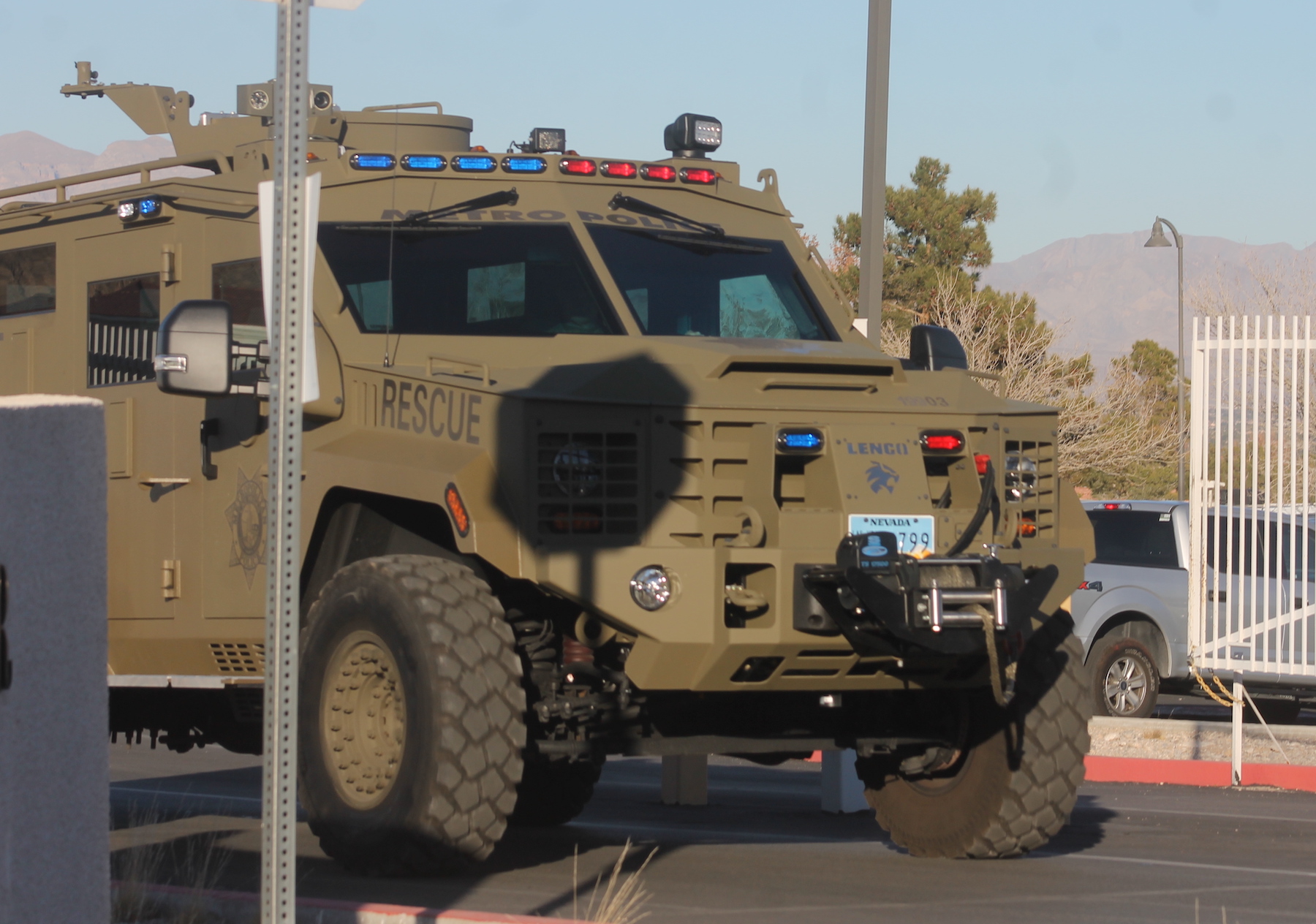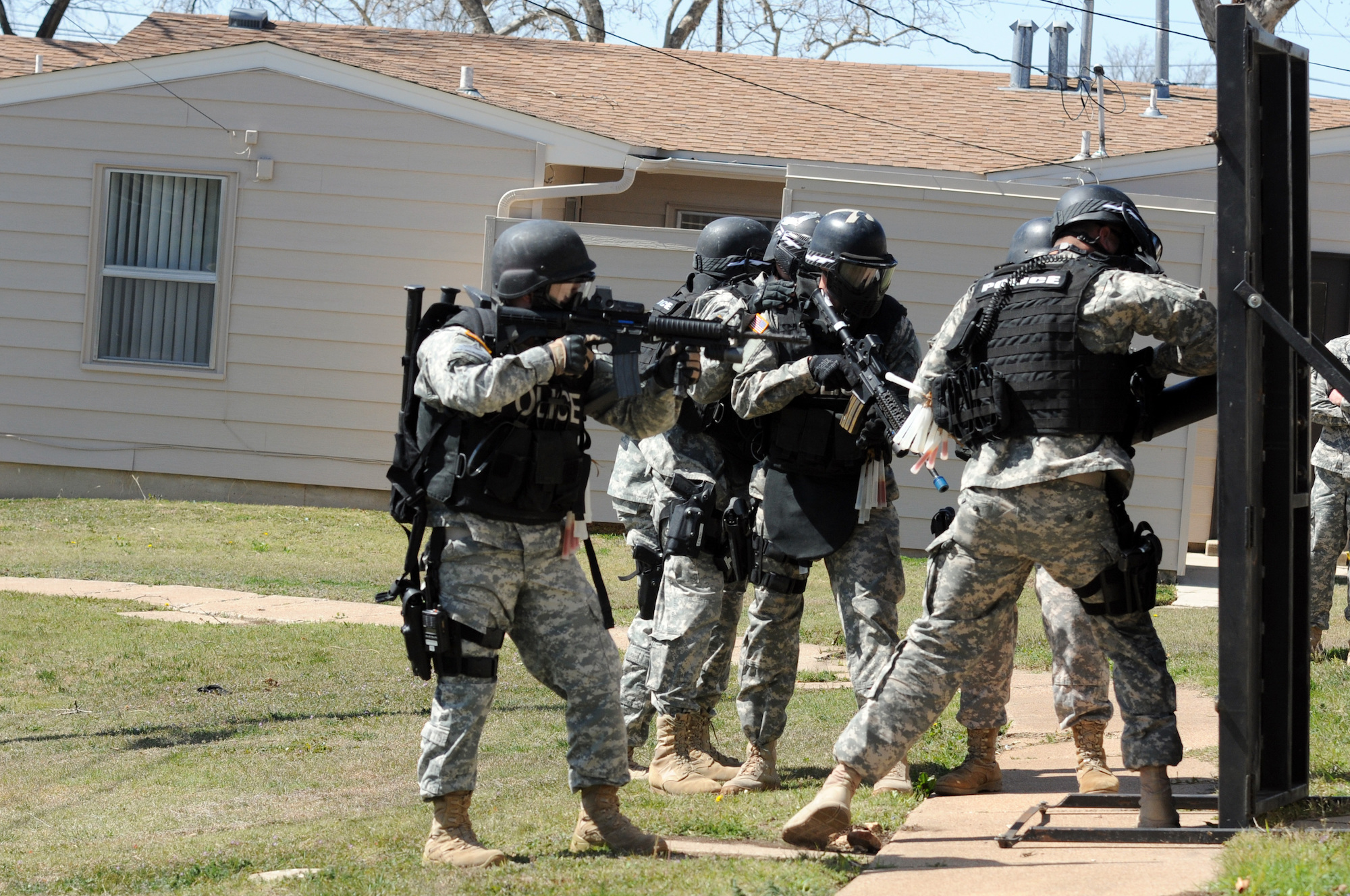
Fort Hood housing provides new venue for MP SWAT team
(US Army photo by Sgt. Tracy R. Myers, 14th PAD, courtesy of WikiCommons)
- Your team’s breacher steps up to the door to emplace his charges, before stepping back around the corner to join the rest of the team. As he begins his count – 1, 2, BOOM! You realize he was supposed to initiate “ON 3 and then go!” Only something happened, and it wasn’t him that set off the charge.
You start to move forward as planned, only you can’t because you’re on the ground. As you try to get up, but your legs are pinned underneath the body of your team leader, who isn’t moving. “Whose hand is this across my helmet?” When you grab it to fling it off, you recognize that the Nomex gloved hand isn’t connected to anything else.
- Or your team steps off the skids of your armored car and starts to stack up to approach the house.
Just as you get the squeeze to start moving, gunfire erupts from above, and you briefly recognize that you’re taking fire from higher ground. You and your teammates direct suppressive fire at the house you were approaching. Only half the team can get off the X and move to cover. Those team members are taking fire from a heavy caliber rifle that is penetrating their armor and unprotected legs.
What’s Next?
This article is not about how to breach an entryway or escape the kill zone of an ambush. The intent is to get your team operational and functional in the aftermath of several team members being seriously injured or killed in a single incident. That single incident could be anything from a failed explosive breach, a successful ambush, a terrorist incident, or even a vehicle accident. As I don’t know your department, team size, or staffing levels, I won’t presume to tell you what “a significant number” is. I suggest that the number is at least a few members, if not several or more.

Don’t just train until they get it “right,” train until those team members coming back can’t get it wrong (WikiCommons)
I will not presume to tell you how to go about “mentally or emotionally healing” your team or how long that should take, if possible.
Those who were lost would have wanted “The Team” to continue moving forward.
How does your team go about filling the holes left by your teammates?
How does your team get back up to speed quickly and safely?
If this were the military, your team would stand down until new replacements were trained and ready. This process is time-consuming, and your team will not be operational for possibly months.

Any specialized platforms or assets will need to be trained on, like these Customs & Border Protection special agents are doing here. (Photos by Mani Albrecht U.S. Customs and Border Protection Office of Public Affairs Visual Communications Division, Wikicommons)
Your agency can ask a neighboring team to assume tactical responsibilities for your jurisdiction until the team is fully staffed, trained, and re-certified as operational. This process should occur for at least a few weeks after the incident through existing mutual aid agreements. But how long should that go on? Provided that your department does not completely stand down the team, you need to start planning for the re-formation of the team before disaster strikes.
Planning Considerations
For planning purposes, think that at least a quarter to a third of the team is no longer available due to serious injury or death.
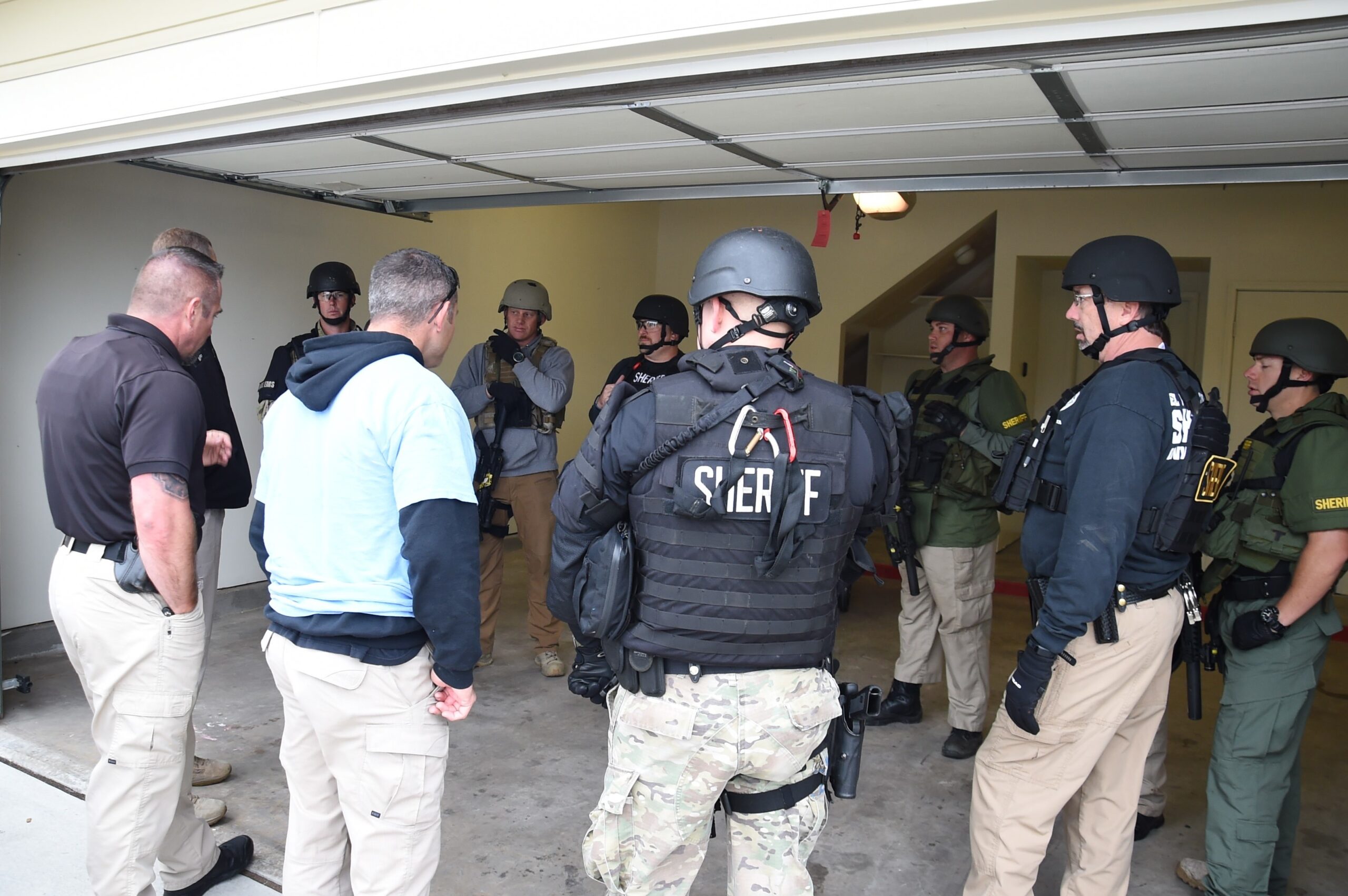
In addition to updating individual skills, everyone needs to come together as a team (U.S. Air Force photo/Halle Thornton, WikiCommons)
Your department has at least a few officers who are former team members, now serving in other duties. Maybe they’ve gone “soft” and traded their cammies and black guns for search and rescue orange or marine services life jackets. Maybe they’re working patrol or have been promoted. These former team members can be formed into a tactical reserve with buy-in and support from your department’s admin and union.
The reserve team members should serve voluntarily without being forced into tactical duties. Hopefully, they will be willing to do so for the short term. New team members will need to be selected and trained, but the “reserve force” should be able to fill the gap while ensuring the team is operational.
Training and Integration
Your reserve force will need to have standards. Members should retain a solid fitness level with at least two days of team training a year. That isn’t enough, but it might be all you will get. That time can be used to show and tell what the active team has been doing in the past year, what skills are being taught, and what tactics are currently being used.
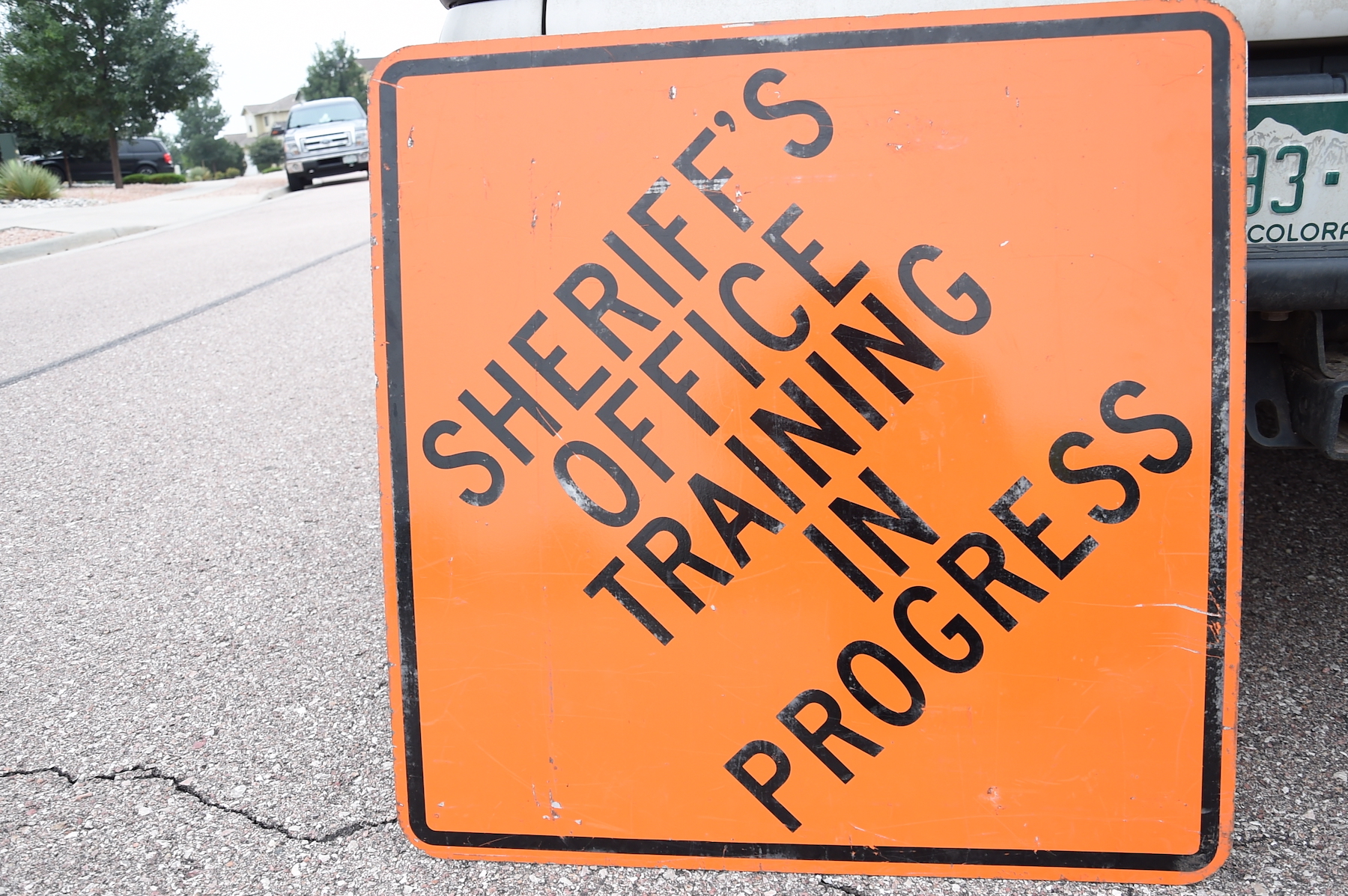
Those officers being re-integrated into the team will need to be re-trained (U.S. Air Force photo/Halle Thornton, via WikiCommons)
The training days should be used to do slow walk-throughs of entries, vehicle operations, containment calls, and some live fire. The reserve force doesn’t need to be fully equipped with the same high-end gear the active team uses. However, if money is available, they should at least have their uniforms. The reserve force members can serve for a set time or until the replacements are operational.
The reserve force members are not “on SWAT” and don’t need to draw special pay unless needed to serve. Once called up, the force members become “active SWAT team members” and would receive all benefits accordingly. Training should begin immediately and again include the following:
- Slow-speed entry work.
- Basic team shooting drills.
- Learning to take orders from remaining active members.
These reserve force members can also be “called up” when more than a couple of current team members go down with “normal” injuries or are called up themselves for their Military Reserve or National Guard service.
Alternatives
Another idea would be to have “alternates” or a “B” team in place attached to your team. These members are your drivers, perimeter, or less lethal operators that can be stepped up to full team member status. Your reserve members can then fill those open jobs.
9-1-1 for SWAT
Law enforcement has always stated that when citizens need the police, they call 911. When the police need help, they call for SWAT. But what happens when SWAT needs help? Start preparing for that day now.
About the author:
Richard Hecht has served as a full-time deputy sheriff since 1991. He has served with Patrol, Civil, SWAT, Transit Police and served as his department’s principal (full-time) firearms instructor from 2017 to 2022. He has since returned to patrol.
He also served with B Co 2/75 Ranger Battalion and previously operated Rich275 DESIGNS, a tactical equipment design and evaluation company.

